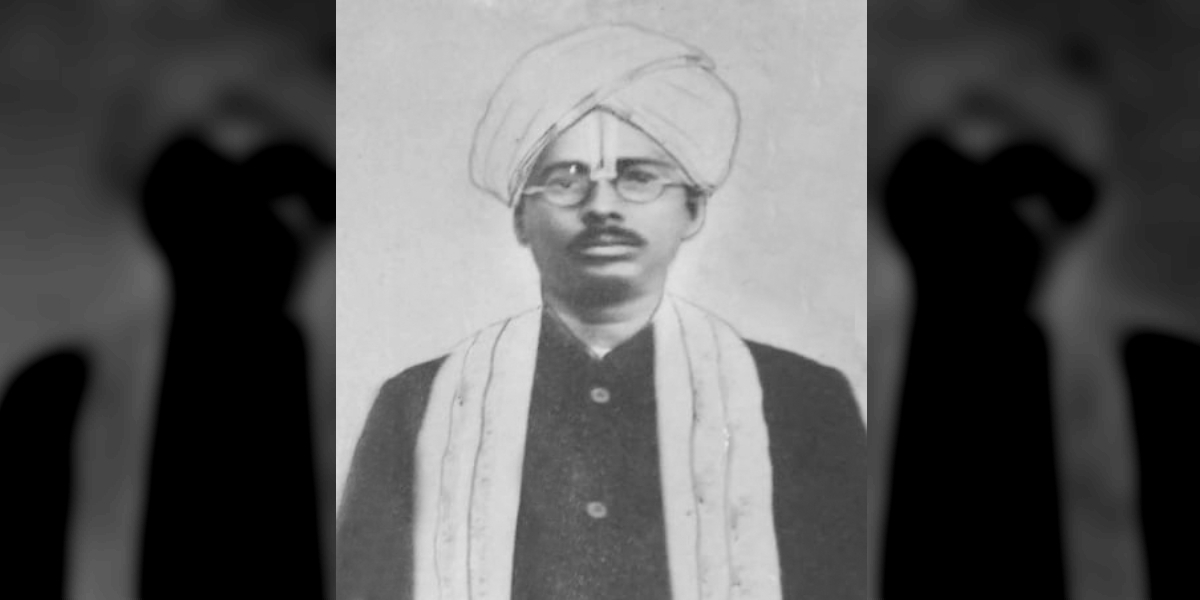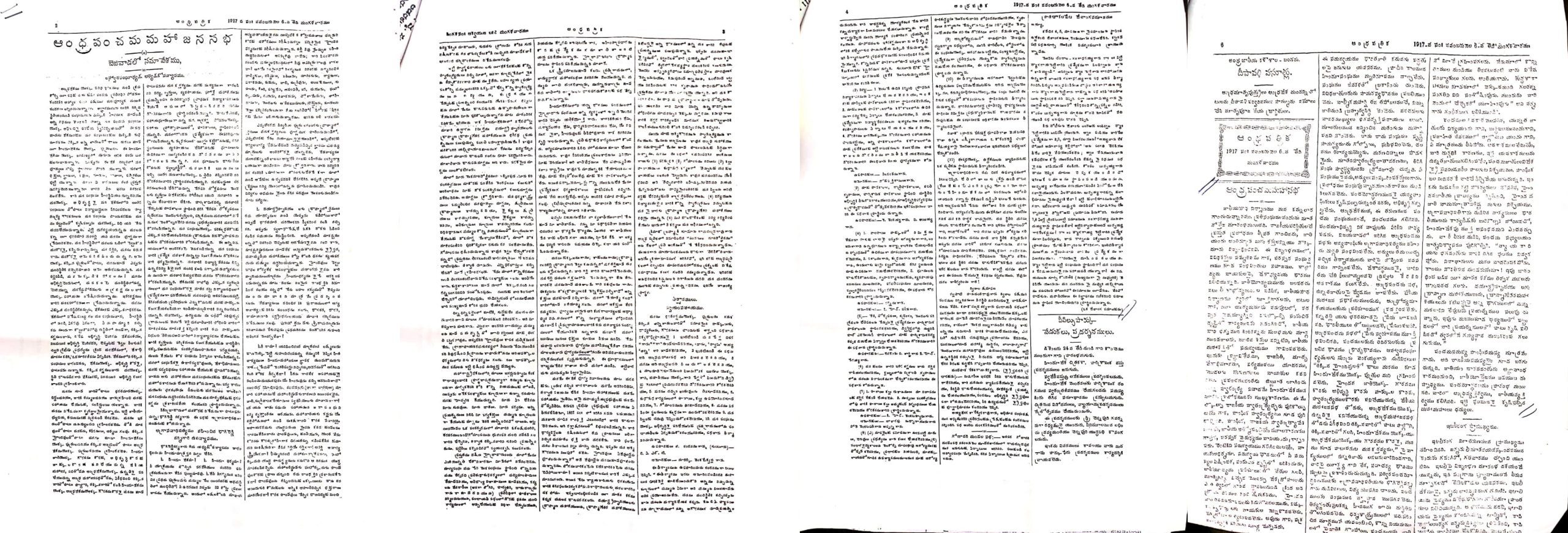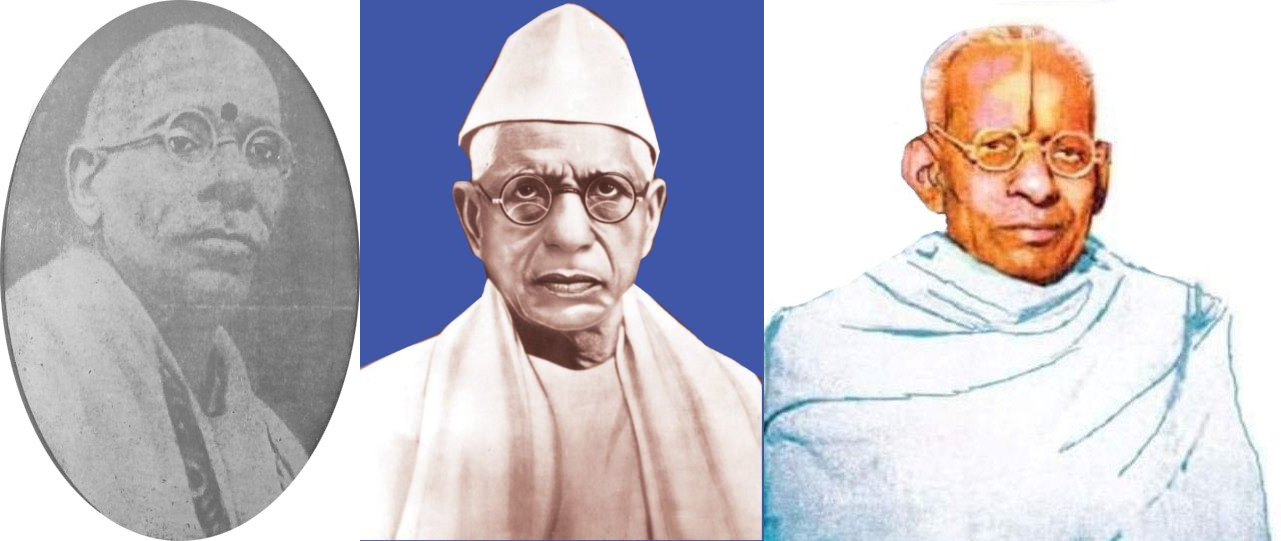A follower of Ramanujacharya, he remained in the Hindu fold and fought discrimination. In the evenings, with a kerosene lantern in his hand, he would visit Harijan colonies. Till his last breath on this day in 1950, Sundru Venkaiah was actively taking up social causes with a focus on Dalit issues.

Sundru Venkaiah, pre-Independence Dalit leader from coastal Andhra (Supplied)
Societal discrimination against Harijans, now called Dalits, was and is a ghastly reality across India.
The coastal Andhra Pradesh region, which was under colonial rule, is an area that received British education early. The educated people there started thinking about society and the much-needed reforms. Their reforms started in the late 19th century and picked up pace in the early 20th century.
This included the abolition of untouchability. The reformers started exclusive hostels for the discriminated sections and taught them with the thought that these educated Harijan youth would start working among their social groups.
One person who understood the philosophy of the reformers and spread the message of fighting discrimination by remaining in the Hindu fold and joining progressive personalities from other communities was Sundru Venkaiah.
This spirit helped him organise the first ‘Adi Andhra Maha Sammelanam’ along with others in Vijayawada from 4 to 6 November in 1917, and he presided over that meet.

The report in ‘Andhra Patrika’ about the the ‘Adi Andhra Maha Sammelanam’ from 4 to 6 November in Vijayawada in 1917 (Supplied)
Venkaiah, hailing from the West Godavari district, faced many hurdles in his quest for education but never gave up.
The Harijan leader’s family details and early life are not that clear, but evidence from his life confirms that their family believed in the Srivaishnava tradition as espoused by the revolutionary saint Ramanujacharya.
After his basic teacher training course, Venkaiah took up the job of primary school teacher in Mallavaram village of the then Krishna district. The experiences of discrimination he saw in those villages made him turn vigorous in his activity of service to the disadvantaged.
In the evenings, carrying a kerosene lantern in his hand, he started visiting the Harijan colonies, taught them, and also imparted upon the elders and children the need to get educated. That he was carrying the message of Ramunaja was well received by the villagers
His other focus was to teach the residents of Dalit colonies hygiene and the need to turn vegetarian.
Despite his theistic beliefs, the Dalit leader had no hesitation in joining hands with the atheist movement builder Gora (Goparaju Ramachandra Rao), in taking education to the doorsteps of Dalit colonies.
The loss of his wife made him shift to Vijayawada to carry forward his mission of educating the Dalits further.
Venkaiah joined Vemula Kurmayya, his relative who was already part of the Dalit emancipation movement in Krishna district.
Incidentally, Vemula Kurmayya became the first Cabinet rank minister belonging to the Scheduled Caste community in South India. He served in the Tanguturi Prakasam ministry of composite Madras presidency.
Residing in Vijayawada, Venkaiah came in contact with Kasinadhuni Nageswara Rao Pantulu, founder of Andhra Patrika daily and his ‘Harijanodharana’ movement and joined hands with his group of reformers, which included Vunnava Lakshminarayana, the author of revolutionary social novel Malapalle, and Ramjee of Machilipatnam.

Vemuri Ramji (left), Kasinadhuni Nageswar Rao (centre), and Unnava Lakshmi Narayana were among those who began a social movement in coastal Andhra to eradicate untouchability (Supplied)
Venkaiah continued his work in society and his contribution was recognised by the then social reformers. He was made the president of the first Harijan conference held in 1917.
Venkaiah was taken in a procession to the venue of the conference in a decorated horse-drawn cart of Ayyadevara Kaleswara Rao with the other leaders from forward communities walking in front of the cart. That was a great and rare honour given to a Dalit leader more than 100 years ago.
Recognising the service of Venkaiah, the then government appointed him as a district magistrate and then as a member of the Legislative Council of Madras Presidency.
He also served as a wartime civilian adviser to the government during the Second World War.
Till his last breath on this day in 1950, Sundru Venkaiah was actively taking up social causes in Andhra with a focus on Dalit issues. His residence in Mallavaram village was later donated by his sons and a school was run from there.
He was much ahead of leaders like Mahatma Gandhi and Dr Ambedkar in taking up the Dalit cause but has not got the recognition he deserves.
(Duggaraju Srinivasa Rao is a retired professor and a freelance contributor on environment and politics)

Jun 10, 2023

Jun 08, 2023

Jun 06, 2023

Jun 04, 2023

Jun 01, 2023